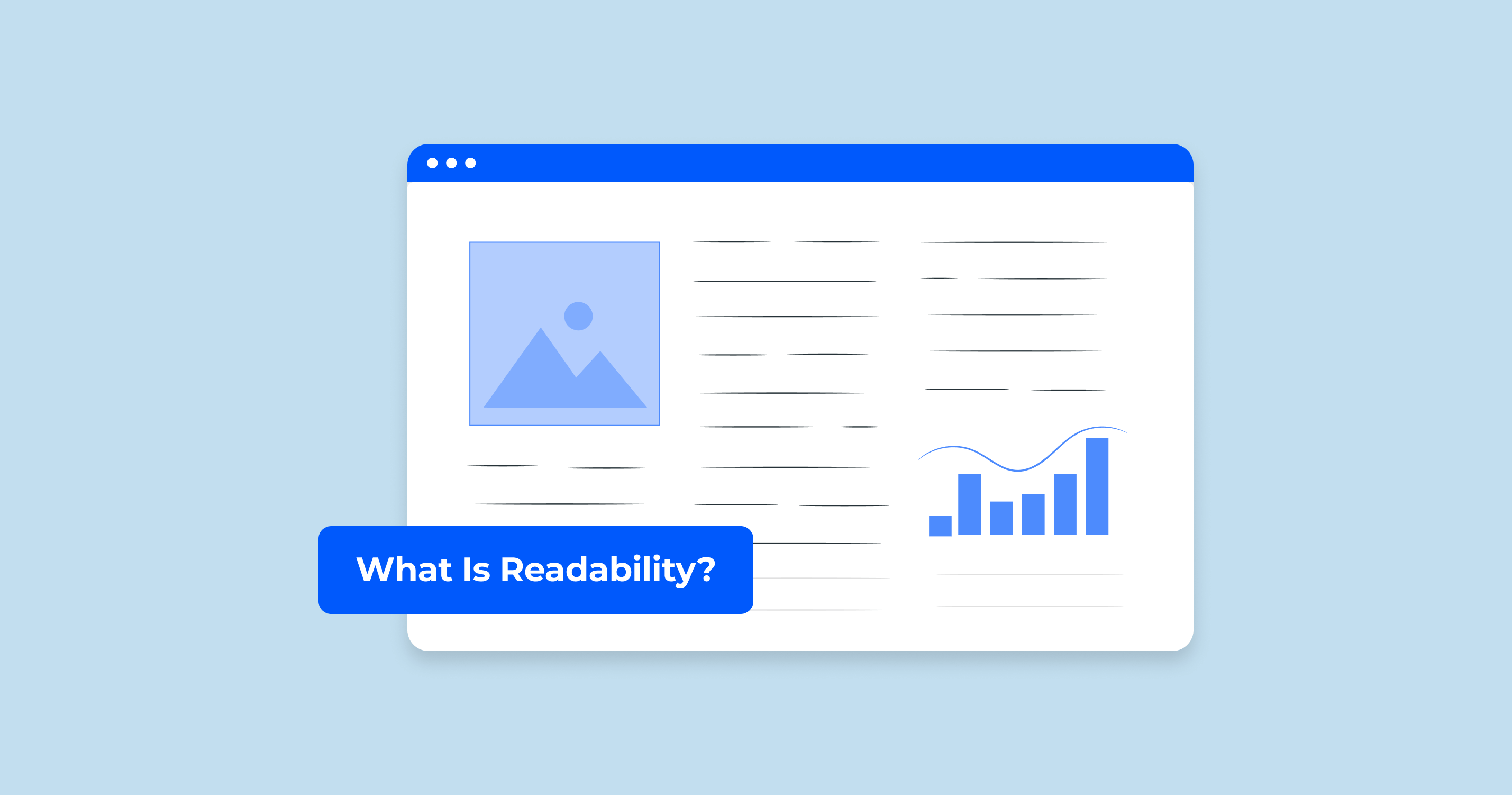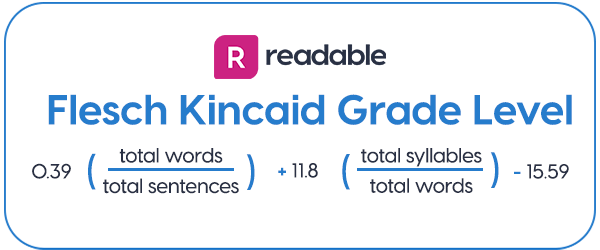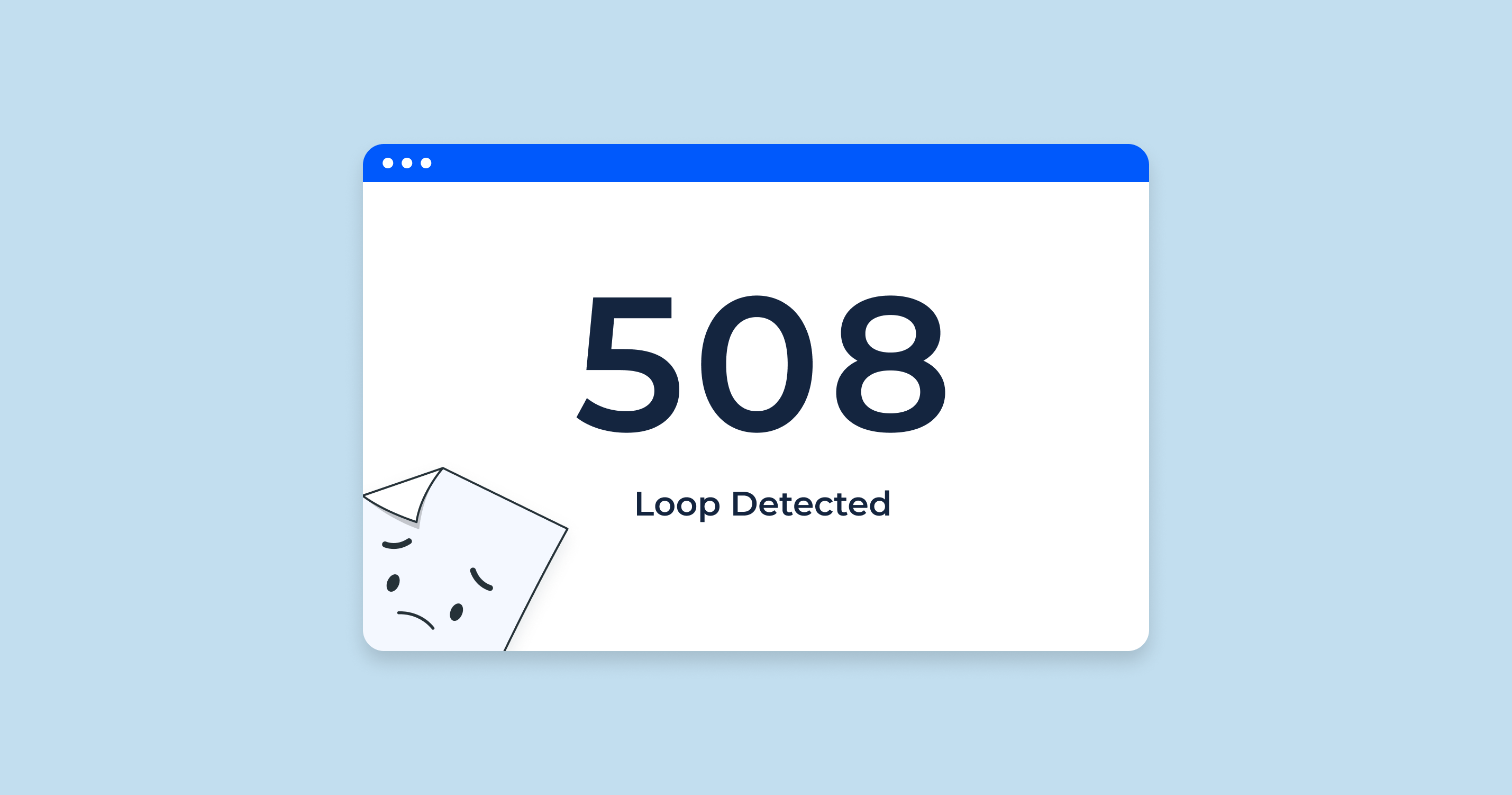What is Readability?
Readability refers to the ease with which readers can understand and absorb written text. It is the quality of written language that makes it straightforward for readers to comprehend the message, making it crucial for effective communication. Readability is not just about the choice of words; it also involves sentence structure, length, and complexity, as well as the organization of the text.
Well-structured and readable content enhances the reader’s experience, allowing them to grasp the intended message with minimal effort and without any misconceptions. Legibility is a multi-faceted aspect of writing that combines grammatical accuracy, syntactical simplicity, and logical coherence, contributing to the overall accessibility of the written material. The purpose of focusing on comprehensibility is to foster a reader-friendly environment where the audience can easily navigate through the text and extract meaningful information without any hindrance.
Why is Readability Important?
Understanding the importance of clarity is paramount as it affects various demographic groups in distinctive ways, impacting the efficiency and efficacy of communication within each sector.
For SEO
Readability is crucial for SEO for several reasons, playing an integral role in user experience and engagement, which are key factors in search engine rankings. Here’s why comprehensibility is so important for SEO:
| Area of Impact | Benefit | Explanation |
| User Experience and Engagement | Enhanced Comprehension | Readable content is understood easily, reducing bounce rates as users are more likely to stay and read. |
| Increased Time on Page | Users spend more time on pages with easy-to-read content, a metric that signals content value to search engines. | |
| Better User Interaction | Readable content encourages interactions like comments, shares, and likes, signaling content’s relevance and quality to search engines. | |
| Improved Accessibility | Wider Audience Reach | Easy-to-read content is accessible to a broader audience, including those with varying literacy levels and non-native speakers, increasing potential traffic. |
| Inclusive Content | Accessible and readable content is inclusive, catering to people with disabilities and improving overall website accessibility. | |
| Enhanced Conversion Rates | Clearer Calls-to-Action | Readable content with clear and concise calls-to-action is more likely to convert visitors into leads or customers. |
| Trust and Credibility | High clarity contributes to the trustworthiness and credibility of the content and the website, enhancing brand reputation and conversions. | |
| Search Engine Crawlers | Optimized Content Structure | Well-structured, readable content with proper headings, subheadings, and paragraph breaks is easier for search engine crawlers to understand and index. |
| Keyword Integration | Readable content allows for natural integration of keywords without stuffing, making the content more SEO-friendly. | |
| Mobile Optimization | Responsive Design | Readable content is crucial for mobile optimization as it improves the mobile user experience, a crucial ranking factor due to the prevalence of mobile searches. |
| Faster Loading Times | Readable content, coupled with optimized images and multimedia, contributes to faster page loading times, positively impacting SEO. |
Here are some of the things John Mueller has said about readability on Twitter:
Legibility is important for both users and search engines. In a tweet from February 4, 2020, Mueller said that:
Readability is not a ranking factor, but it can indirectly impact your search performance. In a tweet from February 8, 2021, Mueller said that:
There is no one-size-fits-all answer to the question of how to make your content more readable. The best approach will vary depending on your audience and the type of content you are writing. However, some general tips include using short sentences, simple language, and clear headings and subheadings. You can also use tools like the Flesch-Kincaid Readability Test to assess the readability of your content.
Overall, it’s clear that John Mueller believes that readability is important for both users and search engines. While it’s not a direct ranking factor, it can indirectly impact your search performance by contributing to a good user experience.
For Businesses
Businesses benefit significantly from high clarity in their communications, documentation, and marketing materials. Clear and concise writing reduces misunderstandings and misinterpretations, facilitating smoother transactions and customer interactions. It helps in conveying brand messages more effectively, building trust and reliability among customers, and ultimately, contributing to brand success.
For Professionals
For professionals, especially in fields like law, medicine, and technology, clarity is indispensable. Clearly articulated documents, reports, and instructions minimize errors and enhance precision in professional practices. It aids in effective knowledge transfer among peers and ensures that the intended message is accurately received and understood, fostering informed decision-making and proficient execution of tasks.
In each of these domains, clarity plays a pivotal role in ensuring that the transmission of information is smooth, clear, and effective, making it a fundamental aspect of written communication.
How is Readability Measured?
Legibility is measured using various formulas and tools, which generally assess the complexity of the text based on factors like sentence length, word length, and syllable count. Some well-known readability formulas include the Flesch-Kincaid Grade Level, Gunning Fog Index, and the SMOG Index. Each formula produces a clarity score, which typically correlates to a grade level or age, indicating the level of education a reader needs to comprehend the text comfortably.
Free Readability Checker by Sitechecker is a calculator that determines how easy your language is to comprehend. The “reading age,” a conditional parameter that indicates how intelligible your work is on first reading, is assessed by such software.
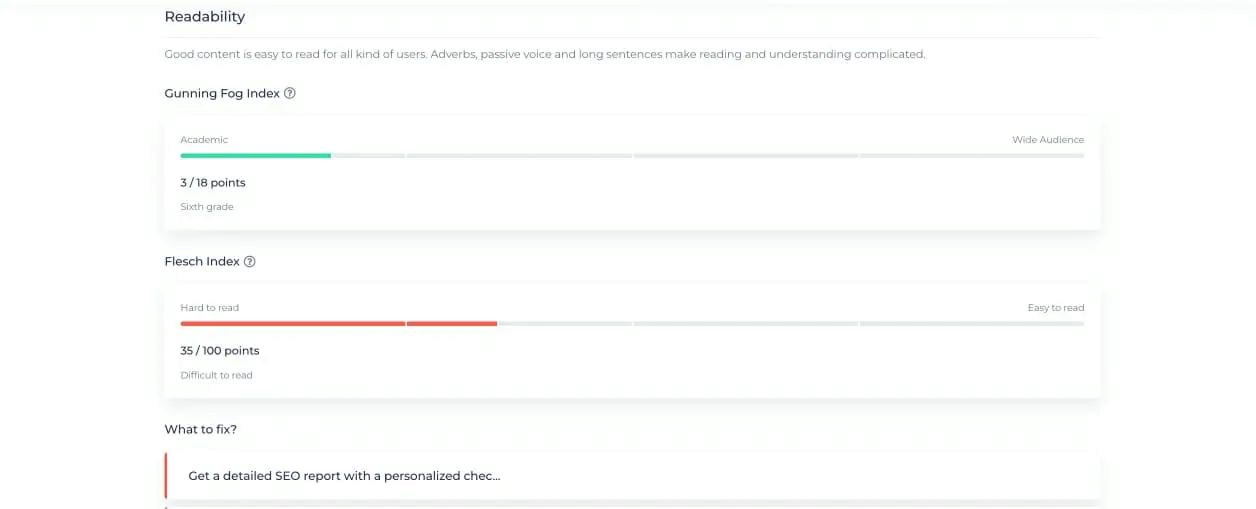
Flesch-Kincaid Grade Level assesses text based on the number of words per sentence and syllables per word, offering a grade-level equivalent score.
Gunning Fog Index considers sentence length and the number of complex words (words with three or more syllables) to calculate the grade level.
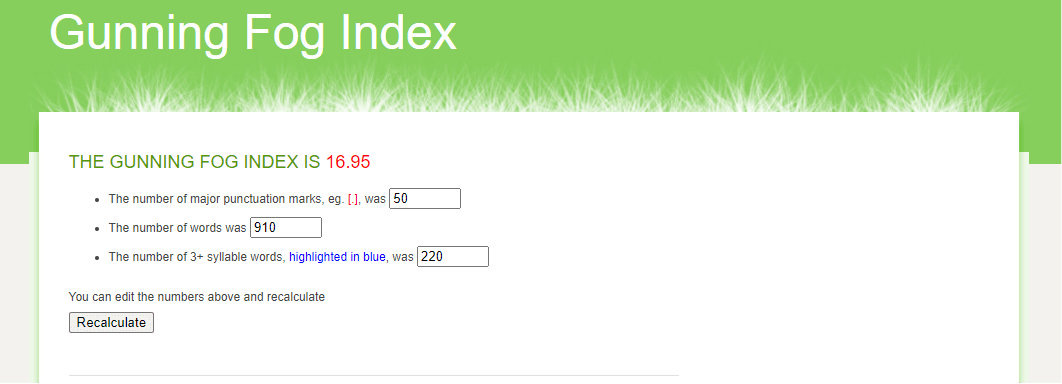
SMOG Index focuses on the number of polysyllabic words in a text to determine the years of education needed to understand it.
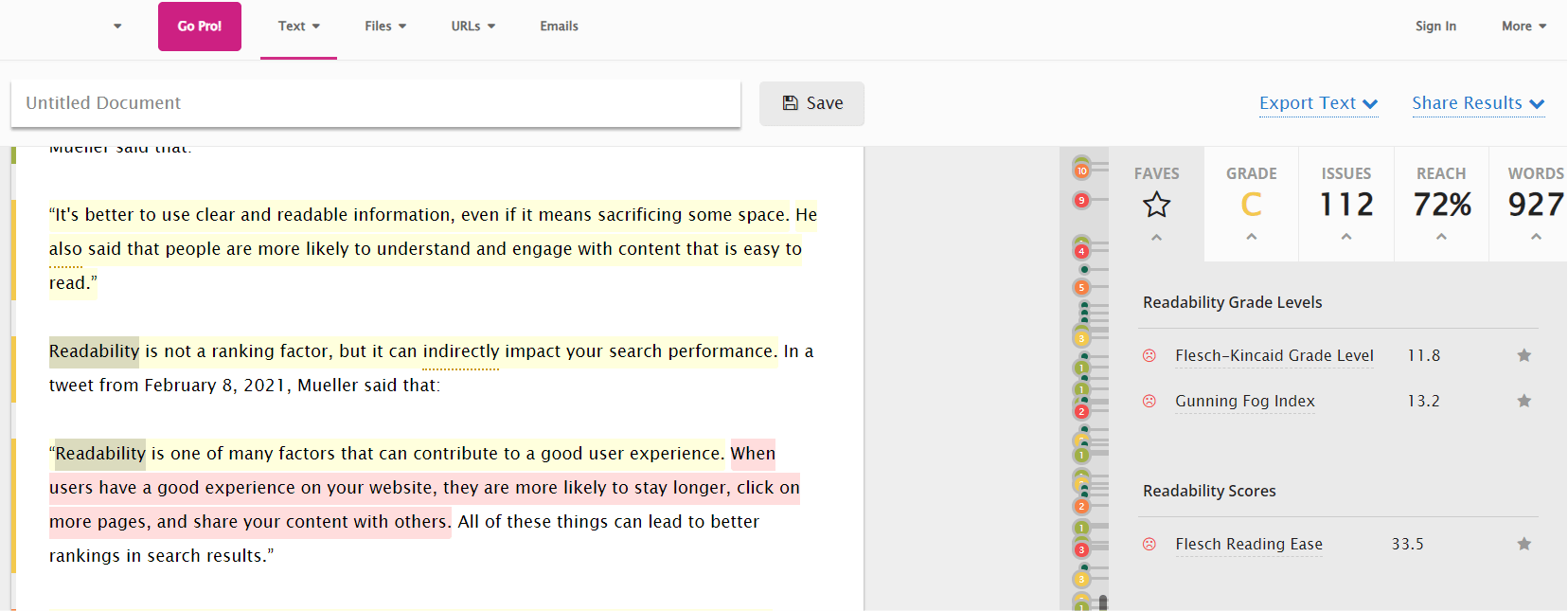
These metrics allow writers and editors to optimize content for their target audience, ensuring the text is neither too simple nor too complex for the intended readers.
Variability in Readability Formulas: Navigating & Interpreting the Differences
Understanding the Variability
The variability in readability formulas stems from the different criteria and computations each uses to assess text complexity. For instance, while Flesch-Kincaid Grade Level considers the number of words per sentence and syllables per word, the Gunning Fog Index focuses on sentence length and the number of complex words in the text. This results in potentially varying scores for the same piece of text, depending on the formula applied, leading to potential confusion and uncertainty for the users regarding the actual legibility and suitability of their content.
Addressing the Variability
-
Identifying the Purpose and Audience
Understand the target audience and the purpose of the text. Different formulas are more suitable for different types of content and audiences. For example, using the Gunning Fog Index may be more appropriate for technical or academic texts, where complex words are more prevalent, while Flesch-Kincaid may be more suitable for general audiences.
-
Using Multiple Formulas
Employing more than one readability formula can offer a more rounded view of the text’s complexity. By comparing the scores from different formulas, users can gain a better understanding of the overall readability of their content, rather than relying on a single metric.
-
Interpreting the Scores Judiciously
When scores vary significantly between formulas, it’s important to interpret them judiciously, considering the criteria each formula emphasizes. Understanding the components each formula assesses can help in interpreting the scores more accurately and making informed revisions to the text.
-
Balancing Readability with Content Integrity
Regardless of the scores obtained, it’s crucial to balance readability with maintaining the integrity and depth of the content. Simplifying text to achieve a better readability score should not compromise the accuracy or completeness of the information presented.
-
Tailoring to Your Needs
Consider the specific needs and preferences of your audience and tailor your approach accordingly. A lower or higher score in one formula doesn’t necessarily dictate the appropriateness of the content for the intended readers. Reflect on the content’s context, audience literacy levels, and subject matter when deciding on modifications based on readability scores.
Practical Approach
-
Cross-Referencing with User Feedback
Collecting and analyzing user feedback on content readability can offer practical insights that can validate or contradict the scores obtained from readability formulas. This allows for a more user-centered approach to improving content readability.
-
Iterative Refinement
Use readability formulas as tools for iterative refinement. Start by applying one formula, make adjustments based on the score and feedback, then reassess the content using another formula if necessary, to ensure a balanced and nuanced approach to optimizing readability.
-
Leverage Tools and Plugins
Utilize available tools and plugins that can apply multiple readability formulas simultaneously, providing a comprehensive view of the text’s readability, and suggesting areas for improvement.
Problems With Readability Scores
While readability scores are helpful, they do have limitations and potential issues that users need to be aware of.
Limitations for Shorter Texts
Legibility scores are generally more reliable for longer texts, as short texts may not provide enough data for an accurate assessment. This limitation can lead to skewed results, making it difficult to ascertain the true clarity level of shorter pieces of writing.
Variability in Readability Formulas
Different readability formulas use varying criteria to assess text complexity, leading to potential discrepancies in scores. For instance, a text may receive a low grade-level score on one formula and a significantly higher score on another, causing confusion and uncertainty regarding the actual legibility of the text.
Misinterpretations of Lower Scores
Lower readability scores often imply that a text is easier to read, but it doesn’t necessarily mean the content is of higher quality or more suitable for the audience. Simplified text can sometimes oversimplify complex concepts or omit crucial details, leading to misinformation or lack of depth in the conveyed message.
Understanding the limitations and proper application of clarity scores is essential for using them effectively as a guideline for creating accessible and clear content, rather than an absolute measure of text quality.
Utilizing Readability Scores in Writing
Legibility scores can be pivotal in refining your writing, ensuring it’s apt for your intended audience. To leverage readability scores:
- Identify Your Audience. Knowing your audience is the first step in using legibility scores effectively. Tailor your writing to match the reading level of your target demographic.
- Choose the Appropriate Formula. Depending on your content type and audience, select the comprehensibility formula that aligns best with your needs. For general audiences, the Flesch-Kincaid Grade Level might be suitable, while the Gunning Fog Index could be ideal for technical texts.
- Edit and Revise. Use the readability score as a guide to edit and revise your content. Simplify complex sentences, break down long paragraphs, and replace difficult words with simpler synonyms.
- Balance Complexity and Simplicity. While aiming for a lower comprehensibility score, maintain a balance. Oversimplification can lead to loss of meaning and depth in your content.
By utilizing clarity scores, writers can create content that is more accessible, engaging, and effective, enhancing communication with their readers.
Strategies to Improve Readability Score
Improving readability is essential for clearer communication. Here are some strategies to enhance your readability score:
Use Short Sentences and Paragraphs: Break your content into short, concise sentences and paragraphs to improve understanding and comprehensibility.
Use Simple Words: Opt for simple, everyday words instead of complex, jargon-filled language, unless it is necessary for maintaining the accuracy of the content.
Use Active Voice: Writing in active voice makes your content more direct and engaging, thereby improving comprehensibility.
Incorporate Bulleted Lists and Subheadings: These break the text, making it scannable and more user-friendly, aiding in better comprehension.
Use Images and Multimedia: Visual aids and multimedia elements can break the monotony of text and help in explaining complex concepts more effectively.
Applying these strategies can not only enhance the clarity of your content but also make it more engaging and informative for your readers.
Free Readability Checker to Find Out the Readability Score for Your Texts
The Readability Checker is a robust tool designed to analyze and enhance the clarity and comprehension of your text content. By scrutinizing text for complex words, long sentences, and dense paragraphs, it provides actionable insights, allowing for the refinement of your written material. This tool ensures your content is accessible and understandable, crucial for maintaining reader interest and engagement.

Using this tool is effortless; simply input your text and receive immediate feedback on its readability. In the competitive digital space, leveraging the Readability Checker empowers creators to deliver superior, user-friendly content, enhancing user experience and SEO performance.
Boost Your Content's Clarity!
Make your content more understandable and engaging with our Readability Checker.
Conclusion
In conclusion, readability is a crucial element of effective writing, impacting how easily readers can comprehend the text. It is measured using various formulas, each with its unique approach and focus. While clarity scores are invaluable in crafting audience-friendly content, they come with their set of limitations and must be used judiciously.Strategies like using simple words, short sentences, active voice, and incorporating visual elements can significantly improve clarity scores. However, it’s crucial to balance simplicity with depth and precision to maintain the integrity of the content.
